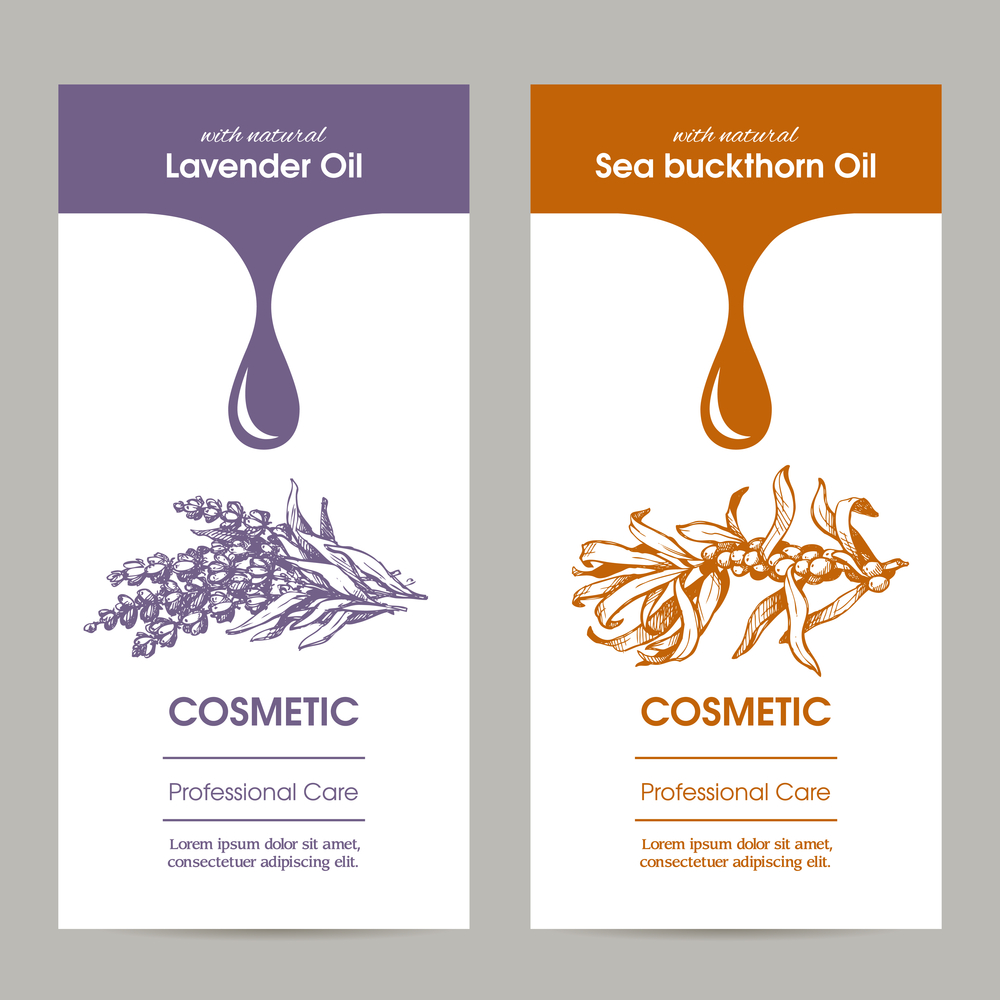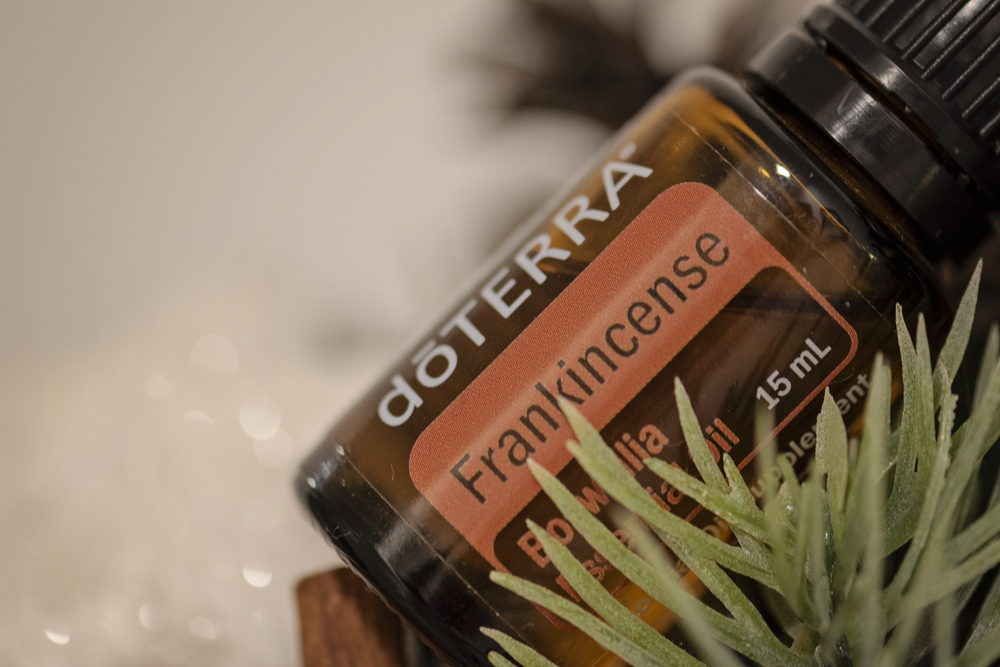The Comprehensive Guide to Essential Oil Bottle Labels
Essential oils are growing increasingly popular. Both as a health supplement and a cosmetic, more people seek them out for varying but specific purposes. Bottle labels are central to branding, and essential oils are no exception. Let’s work through the best practices for essential oil bottle labels — and make your product launch a success.
How to Make Your Essential Oils Stand Out with Bottle Labels
There are several key components to making an attractive bottle label. The size and style of the label are important for making an attractive first impression with customers. Beyond that, there’s plenty of information and imagery that fits every good design.
Find a Precise Label Size for Your Essential Oil Bottles
Most essential oil bottles are small, and their labels cover most of the glass. Essential oil brands choose to do this for several reasons. The small bottle must be visually appealing on the store shelves, and the label is a great way to get customers’ attention. Also, as we’ll cover in later sections, there is quite a bit of content that needs to be legible on the bottle.
Proper label size is crucial to your essential oil packaging design. Make the label large enough to comfortably fit the content you will plan, but leave just enough glass showing to facilitate a sleek design.
Use Color and Images on Your Bottle Label

Owing to essential oils’ demand for light resistance, many bottles look the same across the industry. Therefore, an attractive label is key to getting in the competition. Imagery is key to memory, so be selective with the visuals you choose for your label. Create images that are on-brand and reflective of their respective products.
If your business is planning a full line of essential oils, consider different colored labels for each one. For example, each oil label could have a color that matches the source plant. Also, including photos or illustrations of the source plants on the labels makes for a cohesive product line.
Focus on the Label’s Content
Apart from focal imagery, there are several important elements to include on your essential oil label. As we’ll discuss, these requirements depend on the legal classification of your product. Outlined below are the major components for your business to include on the label and an explanation of FDA regulations.
Product Name
Place the name of your essential oil where it’s easily visible on the bottle label. Your product name will stay top-of-mind with customers even after they’ve made their purchase. Provided users have a good experience with your essential oils, a prominent product name on the label encourages recommendations and repeat purchases.
Ingredients
Customers care about what’s in their products. This is especially true of essential oils, where customers reference the source plant before purchasing. Briefly mention the ingredients of your product on the label—and refer to the source plant by its botanical name. Apart from branding purposes, this helps with clarity. Some common essential oils, like lavender, have multiple species, so make sure to be specific to your customer base.
Branding

As you design your essential oil bottle label, prioritize your brand name and logo. When your business rolls out new oils, customers will remember your brand and explore your catalog. A best practice is making key branding elements pop off the front of the label alongside the name of your product.
Batch Number
A batch number on the bottle label reinforces consumers’ trust in your brand. With a batch number, customers can check back through the production phase as necessary if there are concerns with the essential oil. An air-tight production process minimizes issues, but customers will feel safe knowing they can check with the company if they need.
Expiration Date
Technically, essential oils don’t “expire”. They don’t grow mold or spoil in the same way food does, but essential oils do have a shelf life. With repeated exposure to oxygen, heat, and light, the product changes over time in unpredictable ways. How the oil changes depends on the original product, and it’s ill-advised for customers to use it past its date. To be transparent with your customers, include an expiration date on the bottle label.
Use Instructions
Essential oils are multi-purpose, so it’s important for customers to know the product’s suggested use. Consumers purchase essential oils to relieve a specific issue or to seek specific benefits. Write instructions prominently on your bottle label; tell shoppers exactly what your essential oil is geared toward. Use instructions are crucial not just for getting customers, but the right customers who will come back for the same product.
Stay in Line with FDA Regulations
The FDA typically classifies essential oils as a drug, a cosmetic, or both. The classification depends on your business’ claims about the product. Your labeling practices will depend partly on the FDA’s selection, as drugs have several additional label requirements.
If the FDA approves your essential oil as a cosmetic, then your label must include the following:
- The manufacturer’s name, packager, or distributor
- The address of the manufacturer, packager, or distributor
- The quantity of contents in the product
- A clear statement describing the product’s intended effect
Essential oil drug products require all the same as cosmetics. Additionally, drug labels must include any alternative ingredients and how to handle blended ingredients. The FDA must also approve drugs via the Center for Drug Evaluation and Research. Only after approval may your business sell the product.
The difference between drugs and cosmetics is more complex than it seems. Dandruff, for example, is technically a form of a disease, so essential oils that counter dandruff are drugs. An essential oil product that temporarily lightens wrinkles is a cosmetic, but an “anti-aging” product that smoothes wrinkles is a drug. For more research, read the FDA’s guide to cosmetics compliance before labeling your bottles.
Oil-Proof your Bottle Labels
Essential oil bottles see splashes of water and the oil itself throughout its lifetime with the customer. Customers prefer the product to stay visually appealing, so make sure your labels are resistant to the liquids. An easy way to do so is by laminating your bottle labels with waterproof synthetics.
Conclusion
As you design bottle labels for your next essential oil rollout, first consider all the content you’ll need on the label. With those elements noted down, incorporate them into an attractive design that puts your brand at the focus. If your business is growing fast or multiple releases are on the horizon, consider planning ahead by making your label designs fit cohesively with one another.
Are you considering expanding your business into essential oil diffusers? Learn how to get started with our guide.

